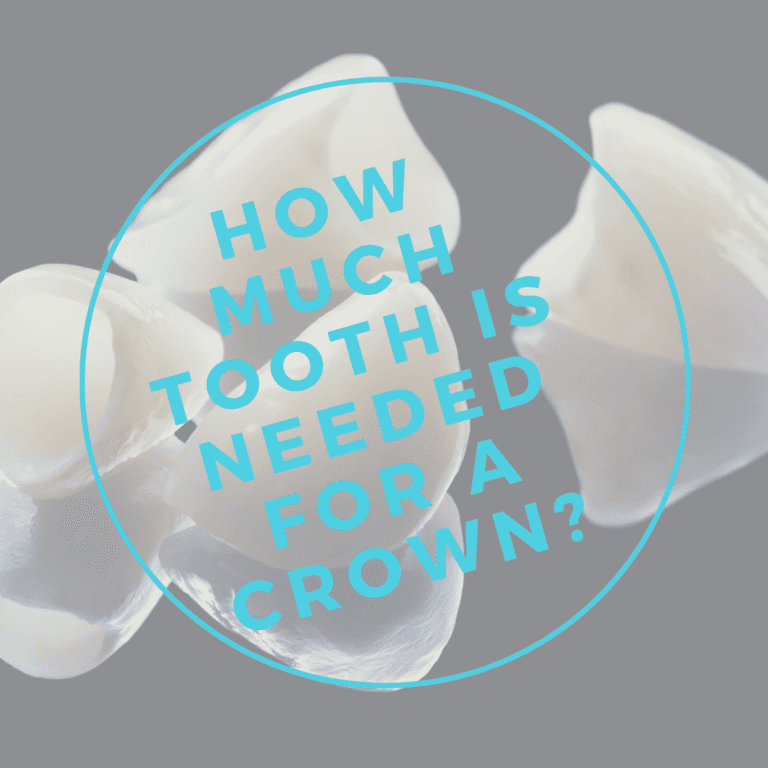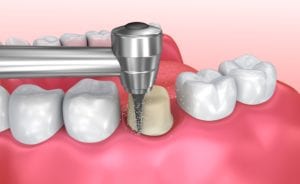How Much Tooth is Needed for a Crown?

There are many reasons why one would wonder how much tooth is needed for a crown. Maybe this is not your first dental crown and you’re wondering if another crown can be safely placed. Maybe you’ve severely damaged your tooth to the point where there is barely any natural structure left. Perhaps your dentist has told you that your tooth is significantly decayed and they are going to need to remove the decayed tissue. No matter your reasoning, it is always a good thing to be informed on dental treatments that affect you.

Although dental crowns act as caps that fit over the top of teeth, they still need to have an adequate amount of tooth structure to adhere to and help reinforce them from the inside out. This is why it is important to know just how much tooth is needed for a crown.
In most cases, a dental crown is placed by first reducing the structure of a natural tooth. This means that if you have minimal damage, then you should not have to worry whether or not a dental crown can be placed. However, this process can get tricky if a significant amount of the tooth has already been compromised by decay or damage.
Luckily, all this means is that there may be a few additional steps needed to place a dental crown. Since your dentist has plenty of tricks up their sleeve, this means that dental crowns can be placed with very little remaining tooth structure. However in these cases, the remaining tooth structure must be built up prior to placing the crown.
In most cases, composite resin can be applied in layers to create an adequate base for the crown because of its ability to bond with enamel. Composite resin is a popular dental material that is also used for fillings and bonding. While composite resin alone is not strong enough to build an entire tooth, it works well to create a solid base.

There are other cases where a post-and-core foundation method may be used. This method is generally used if the dental pulp has been compromised by the damage or decay. If the damage or decay has reached the dental pulp, then a root canal will be needed to remove tissue from the inside of the tooth, leaving it hollow.
After a root canal, the tooth will then be filled with a rubber-like material called gutta-percha, as well as a small metal post to provide stability. Dental cement is used to seal the tooth and composite resin may be used to shape the remaining structure. Once this process is complete, the dental crown can be placed over the affected tooth.
Finally, dental crowns can also be used to replace a missing tooth. However to replace a missing tooth, an implant-supported crown is required, which requires the placement of a dental implant. A dental implant is an artificial tooth root that sits in the jawbone. A small metal post called an abutment will poke out of the gums and provide a base in which to cement the dental crown.
As you can see, dental crowns can be applied to teeth of all shapes and sizes, as well as those that have fallen out entirely. Depending on the amount of remaining tooth structure, there are several different techniques your dentist may use in order to create a sufficient base for the dental crown. With that being said, even if you don’t have a lot of natural tooth structure left, it is worth scheduling a consultation with your local dental office to see what your options are.






Recent Comments